Step into the mystical world of Bali, where ancient tales come to life in the form of Barong and Rangda.
In this age-old saga, these iconic figures engage in an eternal battle that transcends time and space.

In the heart of Bali, amidst the lush greenery and vibrant culture, there lies a tale as old as time itself - the eternal balance between two opposites: Barong and Rangda.
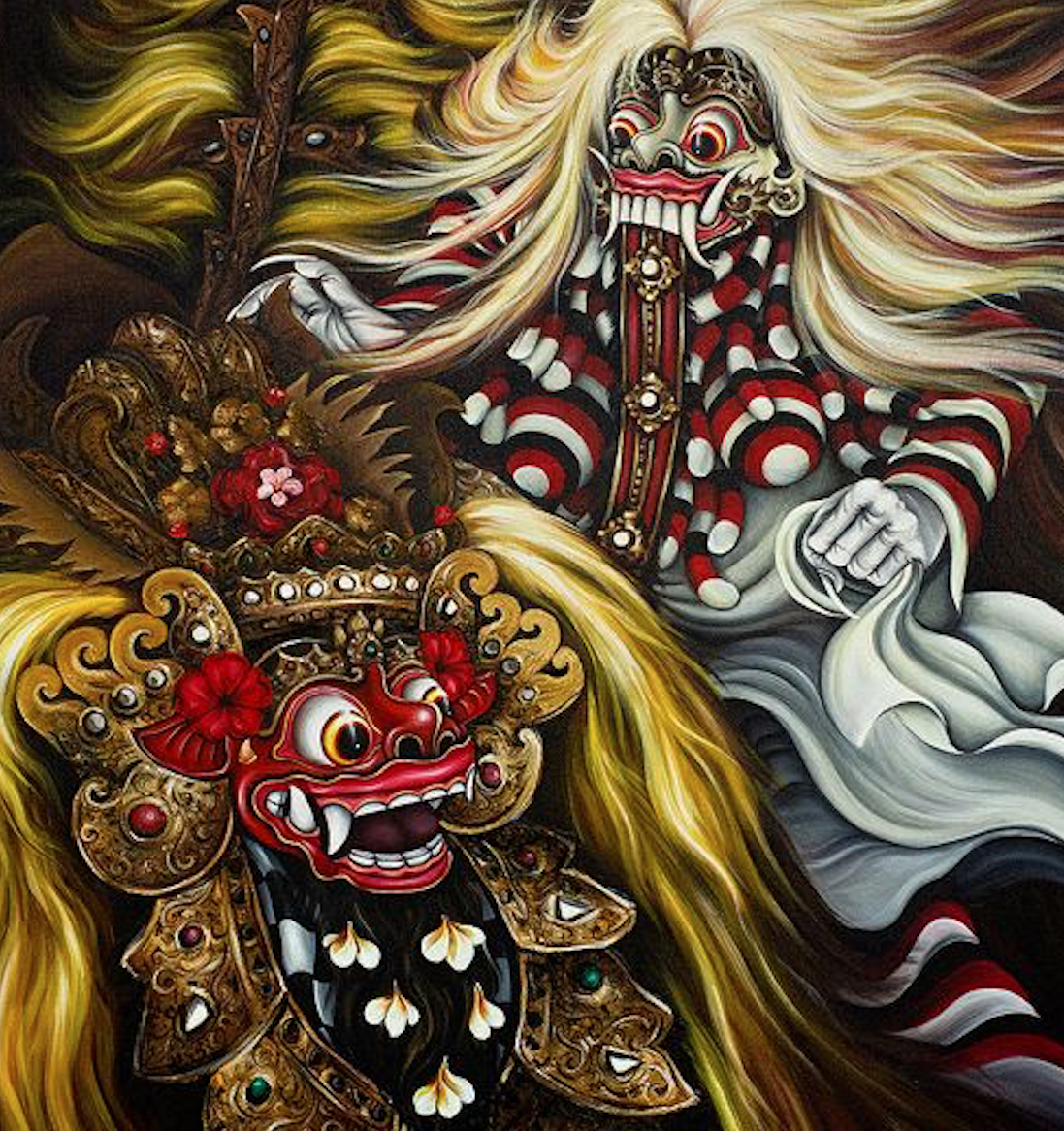
Barong
Barong is a mythical creature and a central figure in Balinese culture and mythology. Often portrayed as a lion-like creature with a fierce expression, Barong represents the forces of good.
In Balinese Hinduism, Barong is considered a benevolent deity and a guardian spirit of the island of Bali.
Barong is believed to possess protective powers, warding off evil spirits and bringing prosperity and well-being to the community.
Its origins trace back to ancient animistic beliefs that prevailed in Bali before Hinduism. Most representations of Barong depict animals, with the most famous being Barong Ket (pictured below).
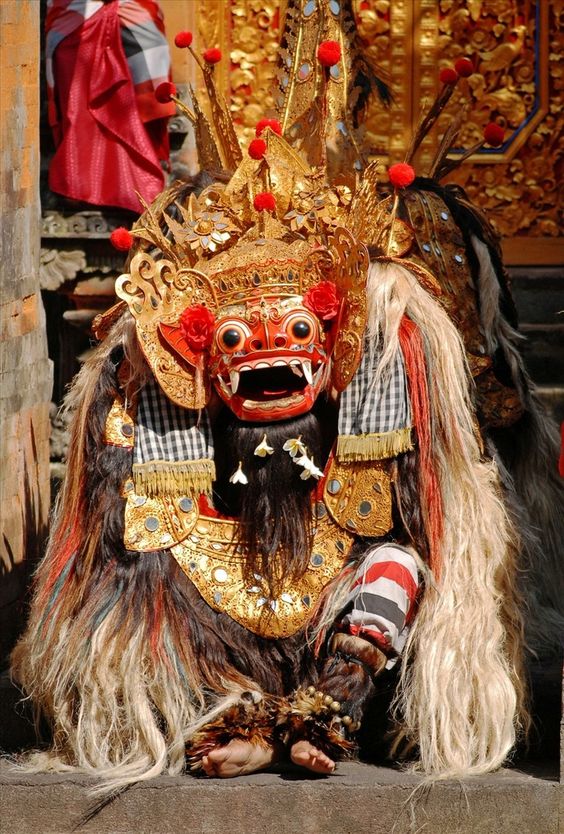
You can find images of Barong all over Bali - on statues,
masks, T-shirts, carved figurines, jewellery, and even tattoos.
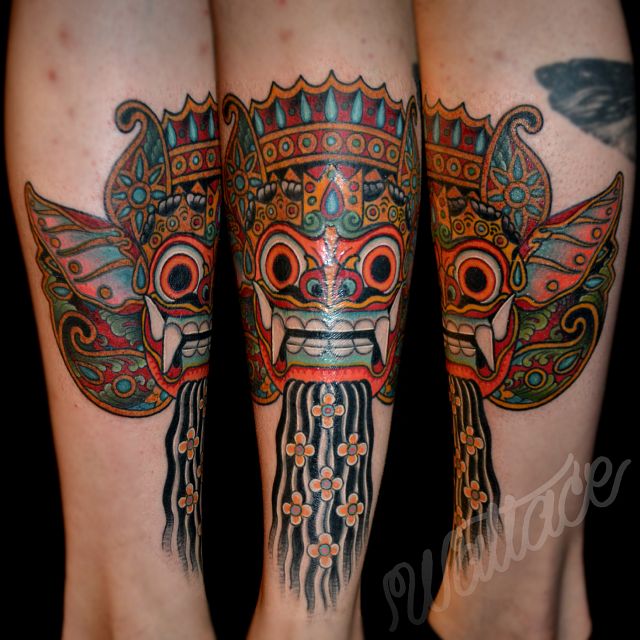
Rangda
Rangda is the demon queen who eats babies, leads evil witches into battles against good, and practices black magic.
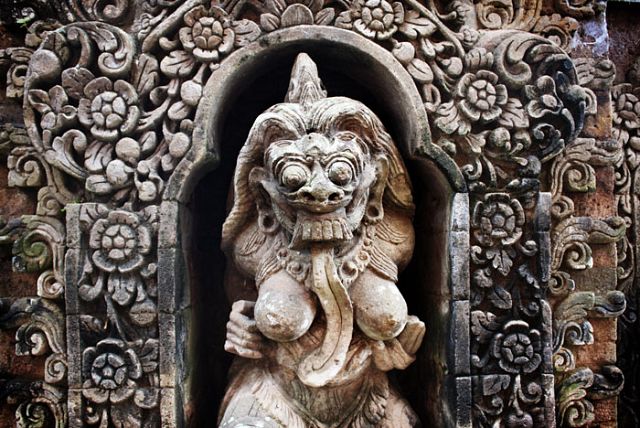
Rangda is often depicted as a menacing old woman with long, dishevelled
hair, drooping breasts, and sharp claws. Her face is traditionally adorned with
a mask featuring bulging eyes, menacing fangs, and a long, protruding tongue.
Some believe Rangda to be Bali's interpretation of the Hindu goddess Kali.
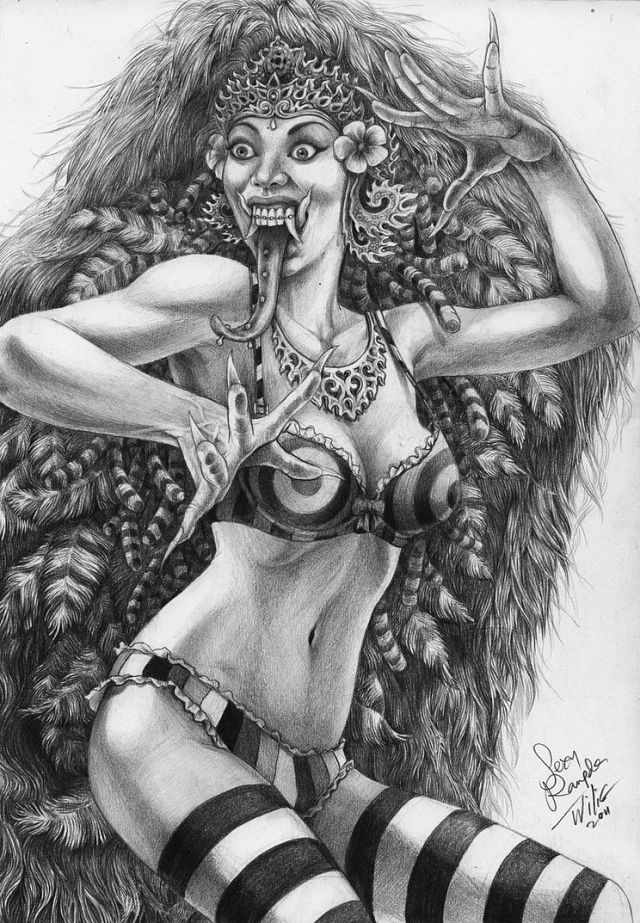
While Rangda is commonly seen as a symbol of pure evil, in
some regions of the island, she is also revered as a protective force.
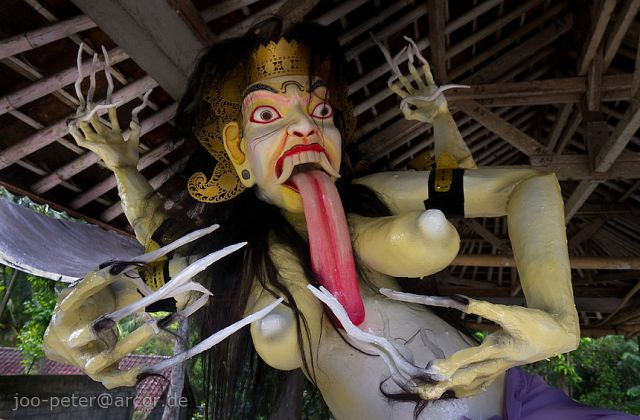
The Eternal Battle of Barong and Rangda
Before delving into the legends of Barong and Rangda, one must understand the concept of Rwa Bhineda. In the Balinese belief system, Rwa Bhineda embodies the notion of duality, where opposing forces such as good and evil, positive and negative, coexist to maintain equilibrium in the universe. It is the delicate harmony between life and death, youth and age, health and sickness, and all other facets of existence.
At the heart of this cosmic balance lies the legendary battle between Barong and Rangda, a spectacle depicted in the sacred Barong dance. Once reserved solely for special ceremonies, the Barong dance has now become a captivating performance for tourists, though its significance remains deeply rooted in Balinese tradition.
As the dance unfolds, two performers come together to bring the mythical creature Barong to life - one controlling the majestic head, while the other manipulates the intricate body. The narrative unfolds with the emergence of Rangda, the malevolent witch feared by all. Barong, embodying the forces of good, rallies his army to confront the wicked sorceress and restore peace to the land.
In the mesmerizing rhythm of the dance, the performers are enveloped in a trance, succumbing to Rangda's dark magic. Yet, under the protective aura of Barong, they remain unharmed as they simulate self-inflicted wounds.
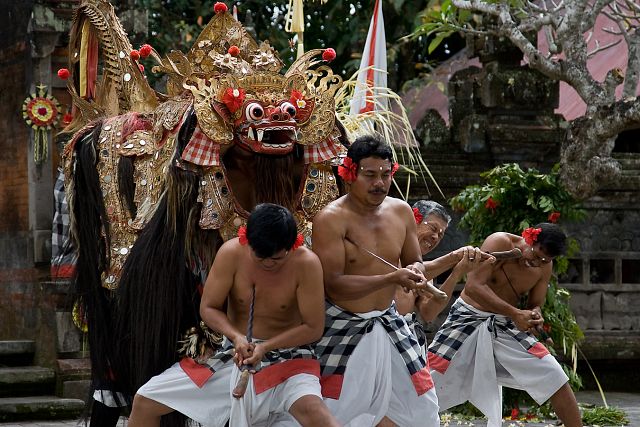
The battle reaches its climax as Barong and his allies ultimately vanquish Rangda, though her defeat is never permanent.
For Rangda, death is but a temporary setback, as she returns in a cycle of reincarnation, forcing Barong to confront her anew. The struggle persists, symbolizing the timeless conflict between light and darkness, good and evil.
In the Barong dance, amidst the intricate movements and haunting melodies, lies a profound message - that the battle for righteousness is perpetual, and only through unwavering resilience can the forces of light triumph over the shadows of darkness.
Thus, the legend of Barong and Rangda endures, a timeless testament to the enduring power of the human spirit in the face of adversity.
You can add one right now!